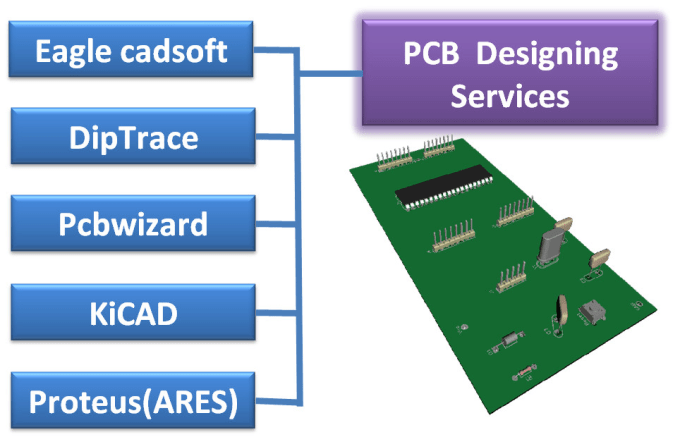
- #DIPTRACE SCHEMATIC TUTORIAL HOW TO#
- #DIPTRACE SCHEMATIC TUTORIAL SOFTWARE#
- #DIPTRACE SCHEMATIC TUTORIAL TRIAL#
- #DIPTRACE SCHEMATIC TUTORIAL DOWNLOAD#
This is my third EDA this week I immediatly gave up on Eagle, I could not even get it going. I think I have a version 3 video a version four file and a version 5 program. The files are not even named the same as the videos show. I have Configure Paths followed by Manage Symbol Libraries. In version 5 there is no preferences > Components Libraries on the drop down box. No matter how many videos I watch not one can get me past this point. From this point everything goes horribly wrong. I found the footprint and the 3d model and downloaded the ones for kicad. Why it is not allready in a library is beyond me. So far I have the drawing loaded with all of the parts but one. You can begin from any of the five components.I have been three days now fighting to complete a 100 pin schematic. Now that you have been introduced to all four programs and properly set up, go to part 1 to get started.

Now open the component editor and save a blank file just like we did in pattern editor, I named mine M圜omp. Name the file whatever you want, I chose MyLib as the file name. Save the file in a directory you can easily access. It will ask you for a name and hint, so just put MyLib in both (does nothing really). Just as the image shows, the shape is an ellipse, the height and width of the pad is 1.7mm, the hole diameter is. Now go to Pattern and select Default Pad Properties. Since most of what we are doing is in millimeters, go to view > Units and select mm. Open up the pattern editor (make sure it's empty). Since most the components share an identical pad size, lets set up a default pad size. And finally the Layout Editor, which will be used to manage the physical layout and connections of all your components.īefore we jump into things, lets not complicate things more than they are. Component Editor, which you will use to make all the components with, Pattern Editor, which produces the physical features of the component such as the silk screen and pads of the component (which you will attach to your component), Schematic Editor, which you will be using to put all your components together.
#DIPTRACE SCHEMATIC TUTORIAL DOWNLOAD#
Once you download it,you will notice four programs after the installation.
#DIPTRACE SCHEMATIC TUTORIAL TRIAL#
But for now, it would be wise to use the freeware version, since there is no 30-day trial limit.

In the future, you may need the complete version. For this tutorial, please download the v3.0 freeware version. Once the layout design is complete, the board design can be exported as art work and manufactured. There are an infinite number of acceptable solutions that meet the requirements, but the challenge is to accomplish this with efficiency by minimizing the overall lengths of traces while meeting all of the other design requirements. To accomplish the layout design while meeting all of the requirements specified in the list of requirements at the end of this document is a bit like a puzzle. This last step is often the most time consuming of all the steps. After this conversion occurs, the layout editor is used to design the PCB i.e., component placement and routing of interconnecting traces. Next, a physical representation of the schematic design developed is converted into physical components through a process which utilizes pattern libraries. Component libraries, either already-made or user-made, are used to accomplish this.
#DIPTRACE SCHEMATIC TUTORIAL SOFTWARE#
The general order of software use is first develop Pattern and Component libraries and design a schematic.
#DIPTRACE SCHEMATIC TUTORIAL HOW TO#
There are a number of already-made component libraries that come with DipTrace, however you will learn how to create your own component library. Once created these components are placed in libraries similar to patterns. The component editor is used to create custom components represented as electrical symbols to be used in schematic designs. Also, there are already-made pattern libraries, but you will create your own custom pattern library. These physical representations of components are called patterns (also sometimes referred to as “footprints”) and are stored in libraries for ease of access. The pattern editor is used to create the actual physical part to be placed onto a PCB.

There are also two additional modules within DipTrace Pattern Editor and Component Editor. The other major part, the PCB Layout, is used to design the actual physical printed circuit board (PCB) by placement of components and routing of traces. One part, Schematic, is used to generate the schematic of a circuit design.


 0 kommentar(er)
0 kommentar(er)
